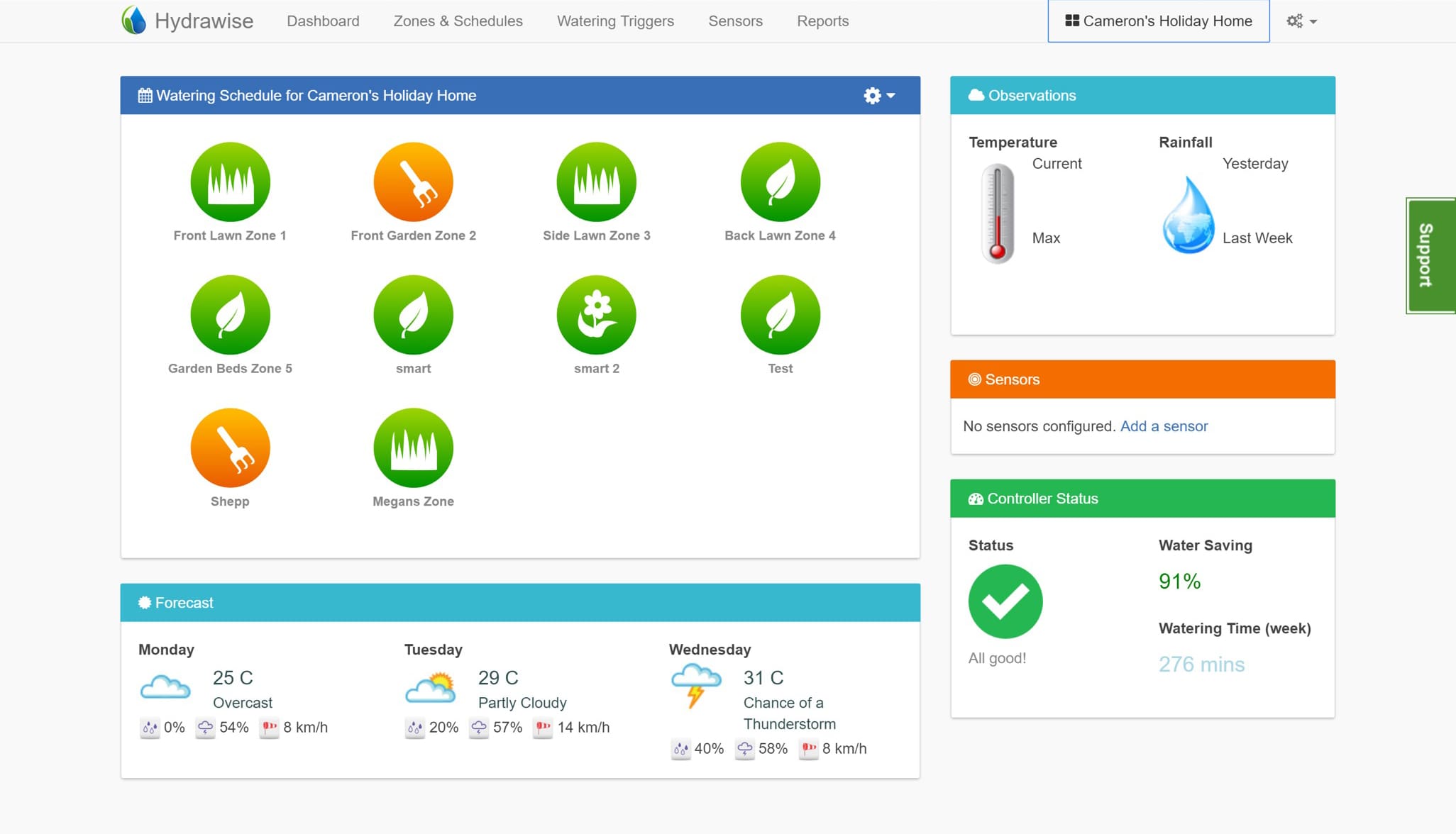
Smart controllers are one of the popular tools for water conservation, so when it comes to selecting one for your customer’s property, what features are the most important to consider?
Kurt Thompson, director of educational programs and an instructor with IrriTech Training, says before installing a smart controller you must understand the ‘Five Musts.’
First of all, no controller or scheduling can overcome a poorly installed irrigation system. Make sure you are getting good coverage and there are no leaks or breaks. Secondly, you have to understand how to set up the right program on the controller. Third, once you have a controller set up, you have to secure it, so the program is not accidentally or inadvertently tampered with by a homeowner or a facilities manager. Fourth, you will always have to go back and fine-tune things. There is no set it and forget it.
“The general rule of thumb is it takes two or three seasons, two growing seasons to get it to where it’s actually doing about as good as it can,” Thompson says. “The fifth one is they have to maintain this system that they fixed up to keep good coverage. They have to keep maintaining it.”
Most people have started thinking that remote-accessible models are the smart controllers, but Wi-Fi can be used on traditional controllers. Smart controllers act like a thermostat and tailor watering schedules based on data from sensors or local weather stations.
Features to Look For
Self-adjusting controllers use either evapotranspiration (ET) or soil moisture sensors. Thompson says which type to use depends on the contractor’s preference.
“Measuring moisture of the soil is a more accurate way to know when there’s enough moisture in the soil to not irrigate,” Thompson says.
David Grover, a branch manager with Pacific Landscape Management, based in Hillsboro, Oregon, adds that it’s important to find the right balance of technical features and ease of operation with the controller.
“Generally speaking, more technical features and capabilities lend themselves to increased difficulty of operation,” Grover says. “In our own organization, we have many field managers that operate and program controllers, so we are not necessarily looking for a controller with all the bells and whistles. It is pivotal for our operators to effectively manage their smart irrigation controllers.”
Thompson says there isn’t much variation between the rain sensors brands offer.
“They all make great ones,” Thompson says. “Some have dual sensors. They have a quick reacting one so it will interrupt if they have been watering when the rain falls. If it rains, it keeps it off and it rains long enough for the regular sensor to shut it off, and it stays off; otherwise, it will come back on.”
These types of rain sensors help prevent the system from running when it first starts to rain.
“It’s critical to have a rain sensor or weather station as close to the property as possible,” Grover says. “Many of the weather inputs are relatively consistent regionally, but rain amounts can vary drastically between sites that are just a mile apart. I would do research into how certain brands get their weather data. I believe having a weather station or rain sensor on site will give you the best accuracy.”

Another feature to consider is mobile app connectivity. Thompson says if your business culture is focused on minimizing the time it takes to service simple callbacks, then remote access via an app is essential.
“A mobile app that will allow you to program and operate the controller from your phone will improve efficiencies, saving both you and your customer money,” Grover says. “This capability eliminates the time-consuming task of accessing the controller, as well as the trips back and forth between the landscape and controller.”
Thompson notes that even if you do have remote access to your clients’ controllers, you still need to keep track of and charge for maintaining the system.
“That’s been a big business problem for a lot of contractors,” Thompson says. “They don’t realize that it’s going to be a drain on their bottom line.”
Residential Versus Commercial Considerations
The main difference between the usage of smart controllers on residential and commercial properties is the ability to use Wi-Fi versus a cellular signal.
“We have found that a majority of commercial properties require a cellular connection because the available Wi-Fi networks are secured and companies are unwilling to allow a third-party irrigation controller onto their networks,” Grover says. “In most cases, smart controllers that solely rely on Wi-Fi for connectivity are not compatible in a commercial setting.”
Thompson says many residential customers are still resistant to having controllers access their Wi-Fi out of security fears. Typically younger homeowners are more receptive to having Wi-Fi access.
Grover notes that in some cases, smaller sites with less water demand may not call for a smart controller due to the long-term investment.
“Smart controllers will always provide benefits over a conventional controller, but I believe there are some situations where the value might not be justified,” Grover says.
Grover advises looking for ways to reduce the cost of smart controller technology for your customers.
“Explore subscription brands that have subscription or lease models that are easier for customers to accept,” Grover says. “Consider reducing margins on the installation of smart controllers. This technology not only benefits your customers, but your organization will realize benefits and efficiencies.”

